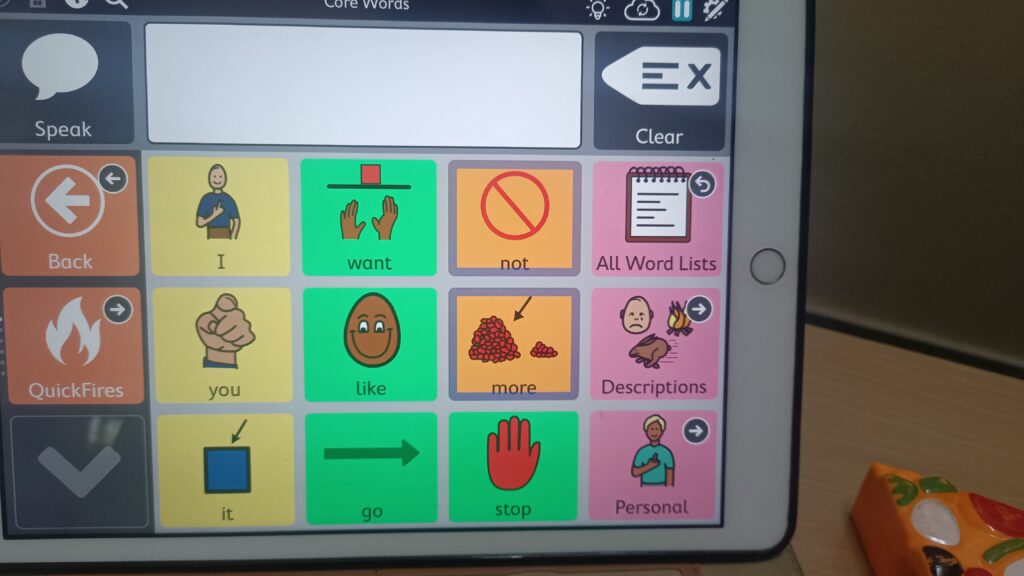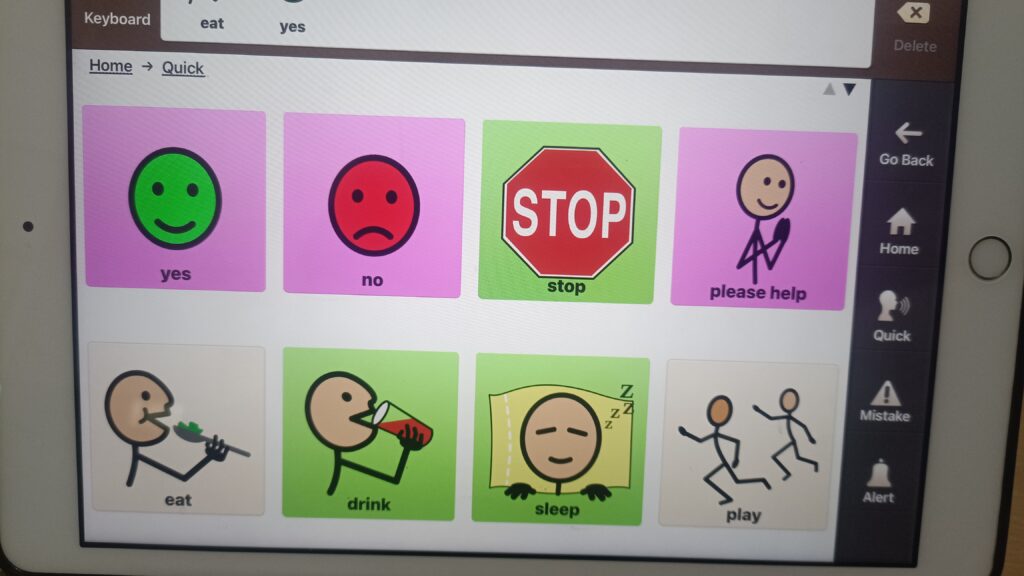AAC, which stands for Augmentative and Alternative Communication, includes all the different ways someone can communicate when they find speaking difficult. It’s not just for one age group—people of all ages can use AAC if they have trouble with speech or language. “Augmentative” means adding to a person’s speech, while “alternative” means using something instead of speech. Some people use AAC throughout their lives, while others may only need it temporarily, like after surgery when talking is not possible.
Different Types of AAC
There are many types of AAC, ranging from simple, no-tech methods to advanced, high-tech devices.
No-Tech and Low-Tech AAC:

These options don’t require much technology and include things like:
- Gestures and facial expressions
- Writing or drawing
- Pointing to letters to spell out words
- Using photos, pictures, or written words to communicate
High-Tech AAC:

These tools are more advanced and often use digital devices. Examples include:
- Communication apps on tablets or iPads
- Speech-generating devices that allow users to “talk” through a computer
People often use a combination of AAC types, as we all communicate in different ways depending on the situation. An AAC system refers to the collection of tools and methods a person uses to express themselves. I use both high tech and paste print out of the same on my desk. So that children can quickly find a means of communication.
Working with a Speech-Language Pathologist (SLP)
A Speech-Language Pathologist (SLP) is a professional who can help you or your loved one find the best AAC system to meet your needs. They also guide you and your communication partners in learning how to effectively use AAC. Since every person is unique, finding the right tool is essential.
SLPs may collaborate with occupational or physical therapists to address any physical challenges that might affect how someone uses AAC. Some devices are covered by insurance, and your SLP can help you explore your options. However, insurance cover for the devices is not available.
Addressing Common Concerns
When it comes to AAC, people often have questions or concerns. Luckily, years of research have provided answers to many of these questions.
Age, Skills, and Timing:
Some may wonder if there’s a specific age requirement for using Alternative communication. The good news is that it can be beneficial for all ages—even children younger than 3 years old can use AAC. No specific thinking skills or test scores are required before starting AAC.
Talking and Motivation:
A common concern is whether using AAC might stop someone from learning how to talk. Research shows that AAC can actually support and encourage speech development. People who use it can also learn to read and write more easily.
Movement Challenges:
What if someone has trouble moving their arms or hands? There are many ways to use Alternative communication without relying on touch. SLPs may work with occupational and physical therapists to find the best solutions, such as using eye gaze technology, where someone controls the device by looking at the screen.
Popular AAC Devices
Here are some examples of widely-used AAC tools:

Tobii Dynavox i-110 and TD Snap:
- Known for durability and its easy-to-use interface, this device helps children communicate through a software called TD Snap, which focuses on core words (words we use most often).
- The device’s grid of icons can be expanded as a child’s vocabulary grows.
- It can be operated by touch or eye gaze for users who have difficulty using their hands.
Proloquo2Go:

- This device offers different vocabulary levels, so children can gradually learn new words.
- The app keeps core words in the same location to make motor planning easier.
- Parents can also choose the device size that best fits their child’s needs at any given time.
Avaz AAC App:

- Avaz is a highly adaptive app that supports users with customizable vocabulary. It has three different vocabulary levels that can be personalized to fit the communicator’s needs, making it suitable for both beginners and advanced users.
- One standout feature is its keyboard for creating new phrases, allowing users to type or select words for novel communication.
- It includes a Favorite Folder where commonly used phrases can be stored, helping the user communicate faster with loved ones.
- The app also allows parents or caregivers to easily add new words and even record voice prompts, making it fully customizable.
- Avaz is accessible on multiple platforms, and it even allows you to convert your vocabulary into a book that can be used anywhere, ensuring communication is always at hand.
Children with oral placement needs use AAC to develop communication skills
